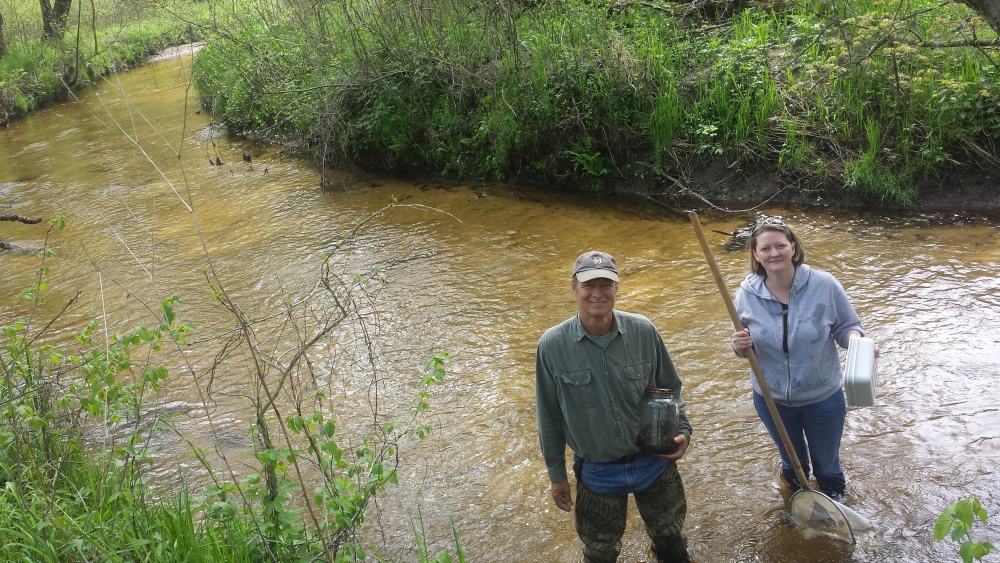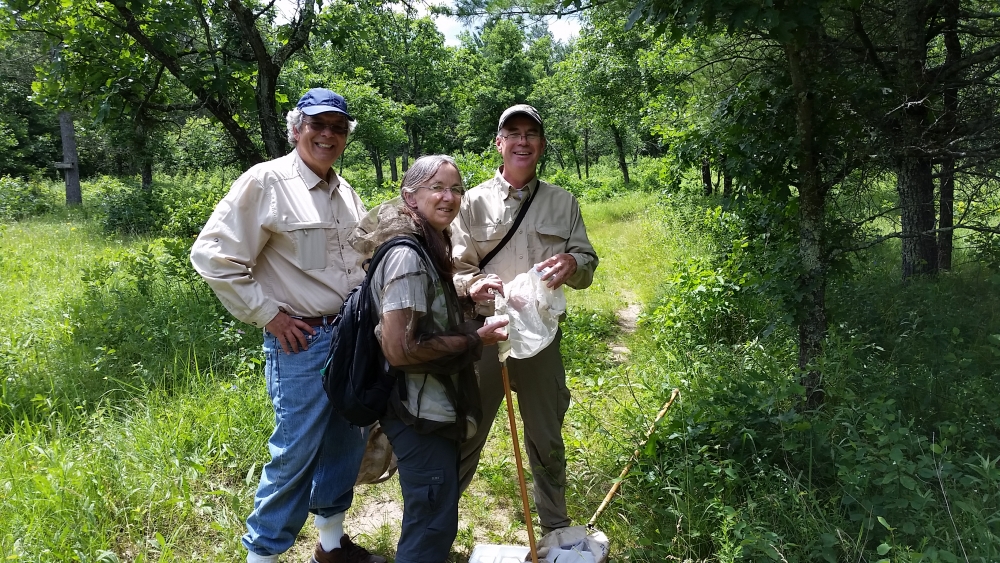






Help with scientific research at Beaver Creek Reserve
Since the early 1990’s, the Beaver Creek Reserve Citizen Science Center has been involving people of all ages in scientist studies for the Wisconsin Department Of Natural Resources. From studying and monitoring invasive species to monitoring water quality the Citizen Science Center at Beaver Creek Reserve has provided valuable data to help scientists learn more about our natural world.
What is Citizen Science?
Citizen Science refers to citizens conducting valuable research in the field. This research contributes to larger studies, helps determine funding for conservation initiatives and helps provide a more in-depth view of local environments.
Why participate in Citizen Science?
Wisconsin has more flora, fauna and acres of habitats than professional scientists can study and monitor with their limited resources. Citizen Scientists can fill in the gaps by learning basic scientific techniques to assist with scientific studies that provide important data.
Who can participate in a Citizen Science Project?
The Citizen Science Center unites community members, teachers, and students with environmental professionals and university researchers.
We train people of all ages and abilities to conduct scientific research. Some projects can be done in your own backyard, while others require travel to specific locations.
Here is a list of some of the ongoing projects being conducted by Beaver Creek Reserve’s Citizen Scientists:
Bird Banding
For more than 20 years the BCR Bird Bander’s have been collecting important data on local bird populations including winter residents and neotropical migrants. Data including age, sex, species and migration data is sent to the USGS Bird Banding Laboratory. The combined data helps researchers and conservationists get a clearer view of bird populations, life spans, migratory patterns and more. By understanding these factors professionals can develop management plans to ensure future generations will be able to appreciate these beautiful creatures.
You can assist our Bird Banders by making a donation to the program or by joining one of our long-term banding programs at BCR. This includes weekly songbird banding, Avian Monitoring Program (AMP), MAPS Project and Saw-Whet owl banding. We are currently in the process of updating our adopt-a-bird program. Please contact us for information on this program.
American Kestrel Research Project
In 2002 a Kestrel Nest Box Monitoring Program began at Beaver Creek Reserve. The nest box monitoring is done in March through July each year. The goal of the project is to provide shelter for nesting Kestrels, which plays a key role in increasing their population.
Learn more about the Kestrel Project
Beaver Creek Reserve Bluebird Restoration Project
The CSC monitors bluebird trails throughout EC County. You can create a nest box trail to monitor in your own backyard. The goals of the project are to increase the number of bluebirds and other cavity-nesting birds in the area, heighten awareness and knowledge about bluebirds and their habitat, provide an activity that engages young people in positive outdoor experiences and integrate an online data system.
Beaver Creek Reserve has 25 bluebird nest boxes throughout our trails and property. Beaver Creek Reserve sells Bluebird houses in the nature store gift shop, holds programs on building nest boxes and much more!
Acoustic Bat Monitoring
Learn how to monitor for bats and then take a late-night hike in one of your favorite locations to see what bats live there. All information is shared with a statewide database so researchers can keep track of the bats across the state.
Learn more about the Wisconsin Bat Monitoring Program
Stream Monitoring: Level 1 and 2
Learn how to monitor streams for temperature, dissolved oxygen, aquatic macroinvertebrates, water quality, and streamflow. Additionally, you will learn how to connect a habitat assessment. Streams are monitored once a month from May through September.
Learn more about state-wide Stream Monitoring Programs
Citizen Lake Monitoring Network
Help monitor and protect our lakes by joining the CLMN as a citizen science volunteer! CLMN volunteers are trained to collect various types of lake data, including water clarity, water chemistry, ice durations, and invasive & native species surveys on their lake of choice.
Learn more about the CLMN, or contact our AIS Coordinator, Bre, to get involved!
Clean Boats, Clean Waters
Through the CBCW program, volunteers learn how to inspect watercraft while conducting aquatic invasive species outreach within their community! Inspectors spend summer days at local boat landings performing boat and trailer checks, distributing information, and collecting and reporting any new invasive species populations.
To learn more about this project, visit CBCW's website, or contact our AIS Coordinator, Bre, for more information!
Project Riverine Early Detectors Project
Have you ever wondered about invasive species on your favorite stretch of river? Project RED volunteers get to paddle and observe as citizen scientists while monitoring for undetected populations of invasive species!
To learn more about becoming an AIS monitor, visit River Alliance of Wisconsin's website, or contact our AIS Coordinator, Bre, for more information!
Purple Loosestrife Biological Control Project
Wisconsin volunteers have been participating in the biological control of invasive Purple loosestrife since 1997. Learn how to rear and release the beetles that are helping to keep our Purple loosestrife populations in check.
To learn more about the Purple Loosestrife Project, visit the WI DNR's website, or contact our AIS Coordinator, Bre, to get involved!
